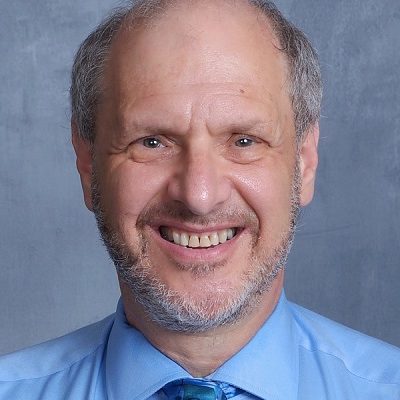Team Functionality: The Oft-Neglected Critical Factor at Tech Companies
By Jeffrey H. Axelbank
[From time to time, NJTechWeekly.com publishes articles by New Jersey consultants and advisers that may be of interest to our readers]
In the tech world, most of the work is done in teams, and with good reason: When teams work well, great things can be achieved. And, yet, there are landmines everywhere. Take these examples:
- Tom is leading a startup, and has assembled a team of the best people he can find. But their meetings always get bogged down in arguments, and the team is paralyzed.
- Elaine recruited Jerry — a “star,” at least judging by his resume. She was hoping that he’d play an essential role on the team, but team members complain to her that Jerry is dominating meetings and slowing things down, rather than helping.
- Stephanie was recruited by a venture capital firm to fix a team that has been dysfunctional. When she talks to the team members, their frustrations are palpable. It’s nonetheless very hard for her to pinpoint exactly why this group of smart people is not performing. She doesn’t know where to start.
- Denzel leads a team that’s spread out across the country and meets virtually. Team members are often late for meetings and they keep their cameras off. He suspects that they are distracted during the meetings. When he tries to get their input, it’s like pulling teeth. He can’t figure out how to get his team members to participate more.
Most startups and established companies do their due diligence as they assemble a collection of individuals and fashion them into a team. They conduct interviews to make sure the prospective team members have the requisite skill sets. They contact references to get a sense of the candidate’s previous work performance. And they examine each resume in detail, looking for gaps and red flags, and seeking a relevant job history that would prepare the person for the project ahead. People with advanced degrees or training may get priority. There may even be a formal evaluation such as a Hogan Assessment, in which the candidates’ personalities are measured, with predictions regarding their interpersonal style and likely success on a team.
Despite all these precautions, however, teams often underperform. While most of their work is done in teams and groups, very few organizations focus on the factors that make a team high-performing. This raises two important questions: How can you assess your team’s performance? And is there a way to improve how your team members work together?
The instruments that organizational psychologists use to assess team functionality are different from the hundreds of individual assessment tools. What criteria should you use in choosing a team-assessment instrument? First, the survey should be well researched and based on objective data, so that it is psychometrically sound and thus valid and reliable. Second, results are only meaningful if they are given in terms of a “standard score,” that is, based on norms established for a large sample size that is similar to the team being assessed. Third, the results should point to the specific steps needed to improve the team’s functionality. And, fourth, administering the assessment should be painless, straightforward, and not time-consuming. It’s also important to verify that the consultant you’ve hired is trained and certified to administer the instrument and interpret its results.
One tool that meets all the criteria is the Team Assessment Survey (TAS), based on The Rocket Model. It has been used to build over 2,500 teams around the world, includes norms for 19 different types of teams, and is available in six languages. The TAS works for teams comprising 3–25 members, and takes about 15 minutes to complete.
The eight components of The Rocket Model and TAS are:
- Context: Are there shared assumptions about the team’s operating environment?
- Mission: Is there a consensus among the team members regarding the mission, and is it clearly defined?
- Talent: Does the team possess the right mix of skills, experience and capabilities? Is the team size appropriate? Are the roles and responsibilities well defined?
- Norms: Are the team’s communication norms and meeting practices productive? Are there unspoken rules that require open discussion?
- Buy-in: Are all the team members fully committed to the team’s goals? Do they understand how their individual contributions align with these goals?
- Resources: Does the team have the necessary resources to succeed?
- Courage: Are there conflicts within the team that require resolution? Is there a psychologically safe environment that encourages productive discussions? Do team members have the courage to voice their opinions, and are these opinions heard and respected?
- Results: Is the team sufficiently focused on achieving results? Do the members understand how the team’s performance is measured?
In addition to these components, the TAS measures where the team lies on the continuum between being a cohesive team or merely a collection of independent workers. Determining this will help identify the most effective leadership approach.
Consultants certified in The Rocket Model are trained to interpret this feedback and recommend activities to address the shortcomings the TAS identifies. For example, in the case of Tom’s team, which is paralyzed by arguments, the TAS might indicate a lack of consensus regarding the team’s mission and strategy. The consultant would recommend a session in which the team members write on Post-it notes their understanding of the team’s purpose and how they’d define its success. The consultant would then facilitate a discussion of these responses, during which the team would group their notes into common themes.
Elaine’s group, with the “star” who is actually gumming up the works, might yield a TAS result that indicates a problem with team norms. The consultant would then hold sessions in which the team examines the decision-making roles of each member. In an additional session, the members would discuss and agree on the norms they’d prefer for their team.
In all these instances, the goal is to have the team engage in discussions that address the actual problems. Led by a facilitator who’s an expert in group and team dynamics, the team is more likely to become productive, and avoid its familiar patterns of dysfunction.
Whether you choose to use the TAS or another instrument, getting an assessment of your team’s functionality will help you build team cohesion and productivity.
Jeffrey Axelbank is an organizational psychologist who has worked to empower leaders and team members for over three decades. He is also certified in The Rocket Model/Team Assessment Survey methodology. His website is at bit.ly/JeffAxelbankConsulting.


